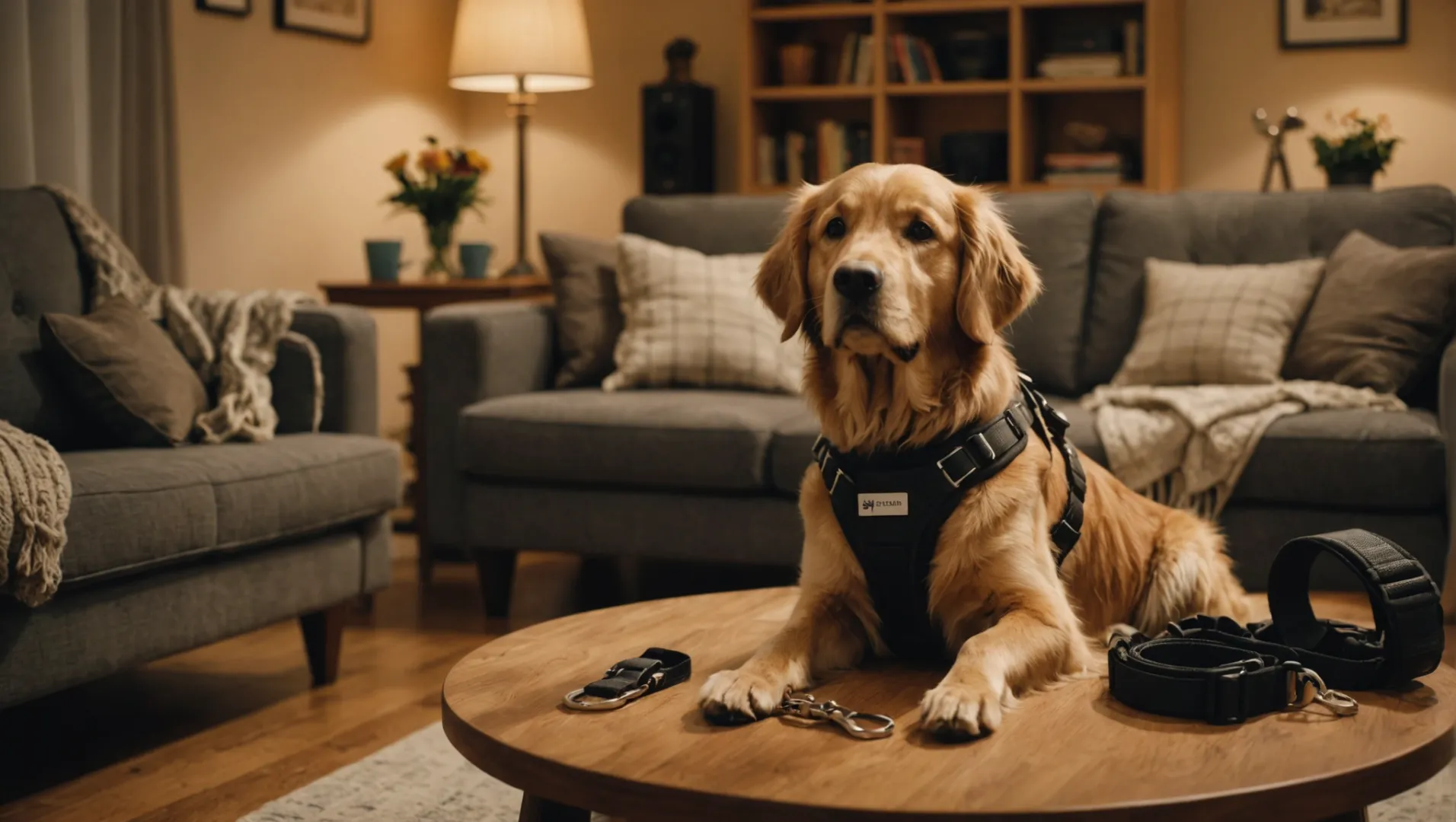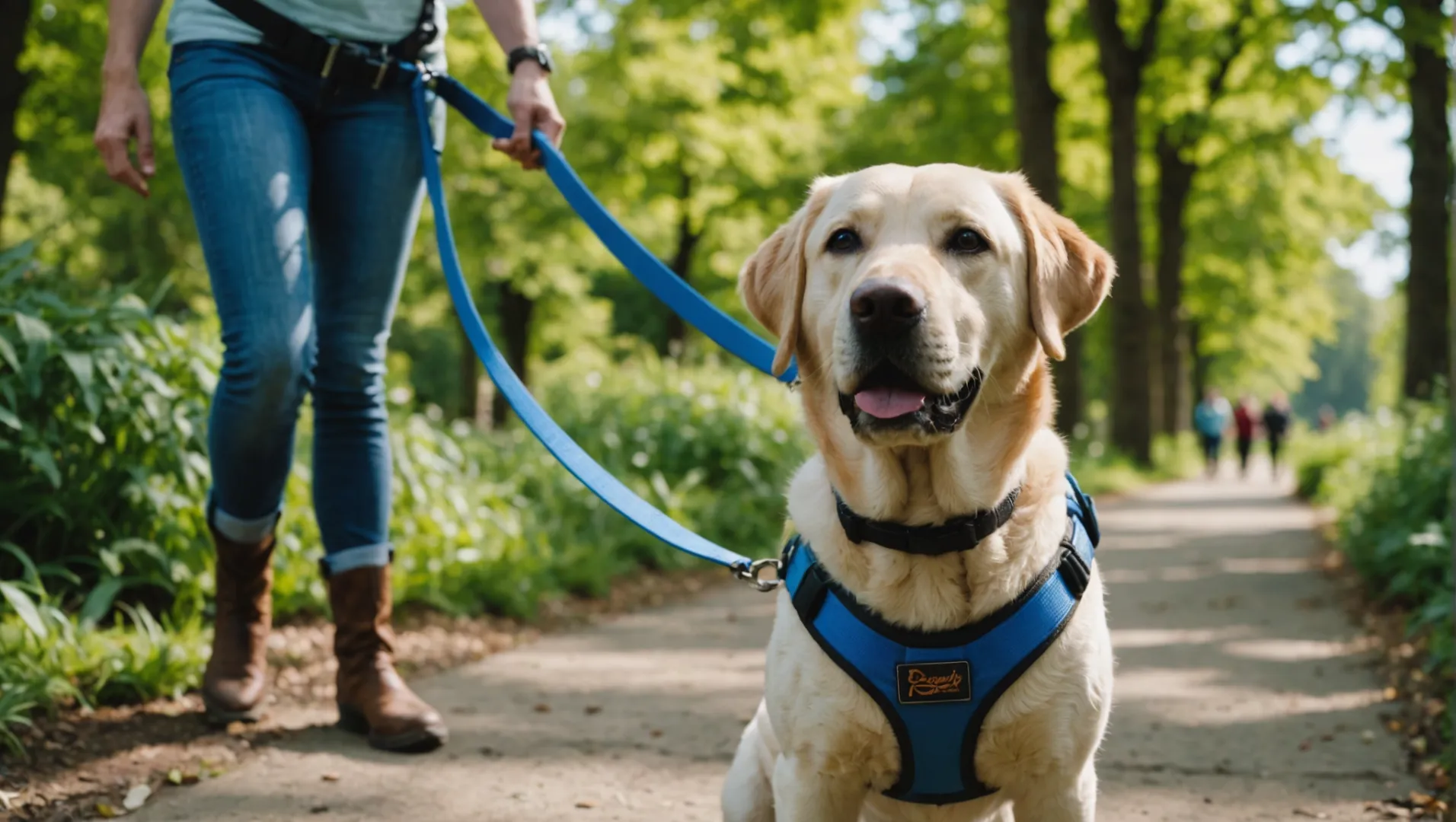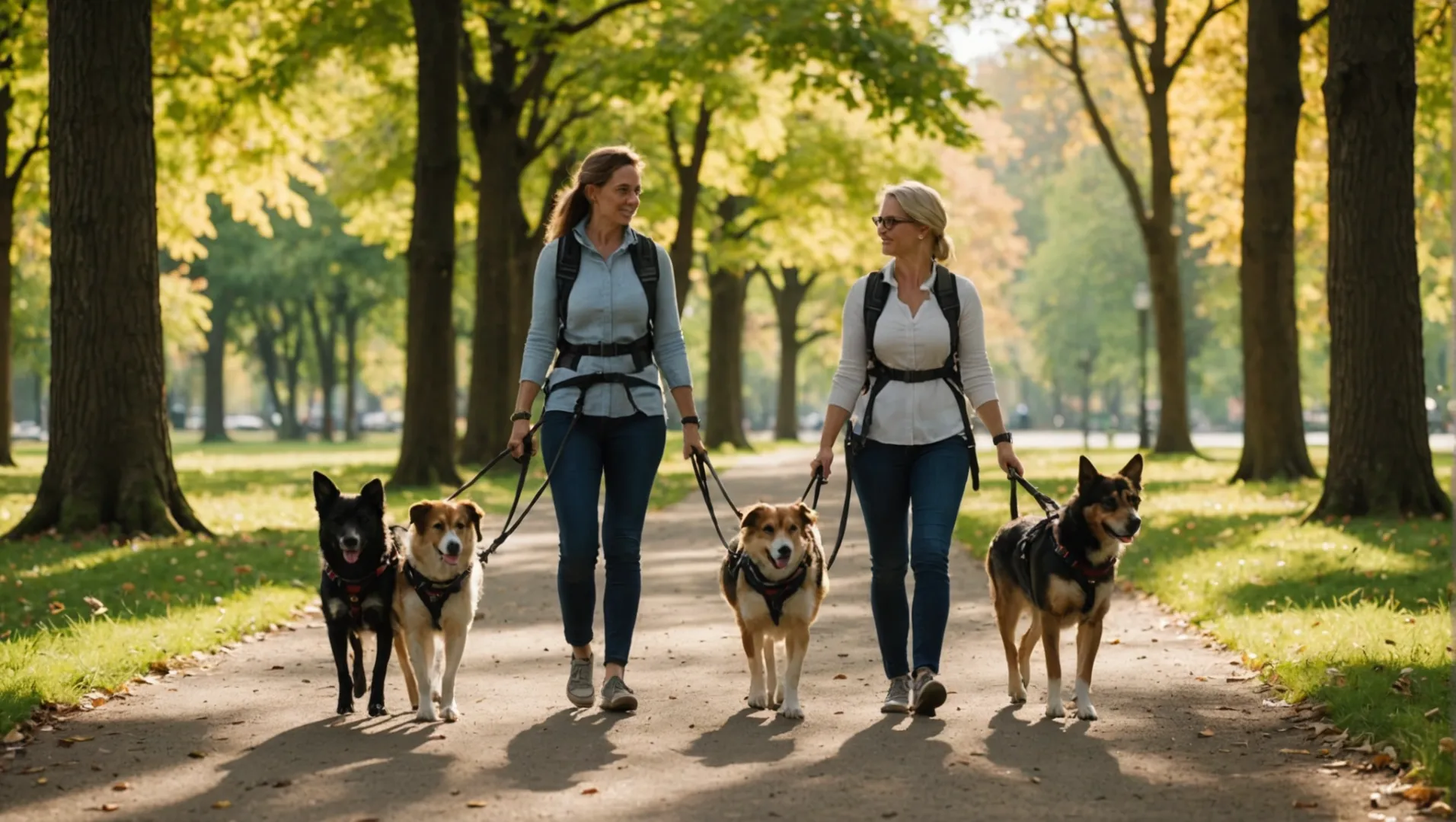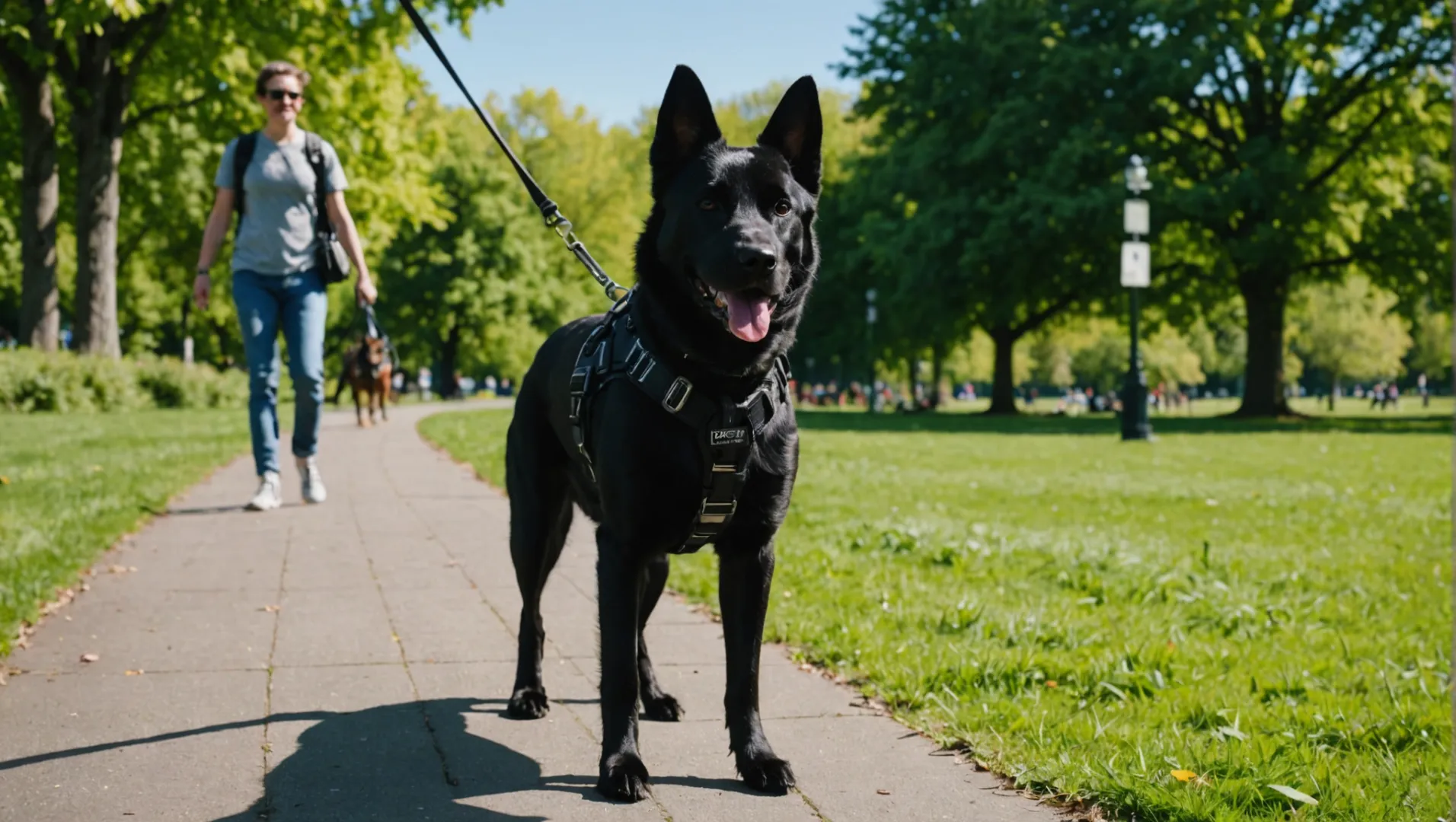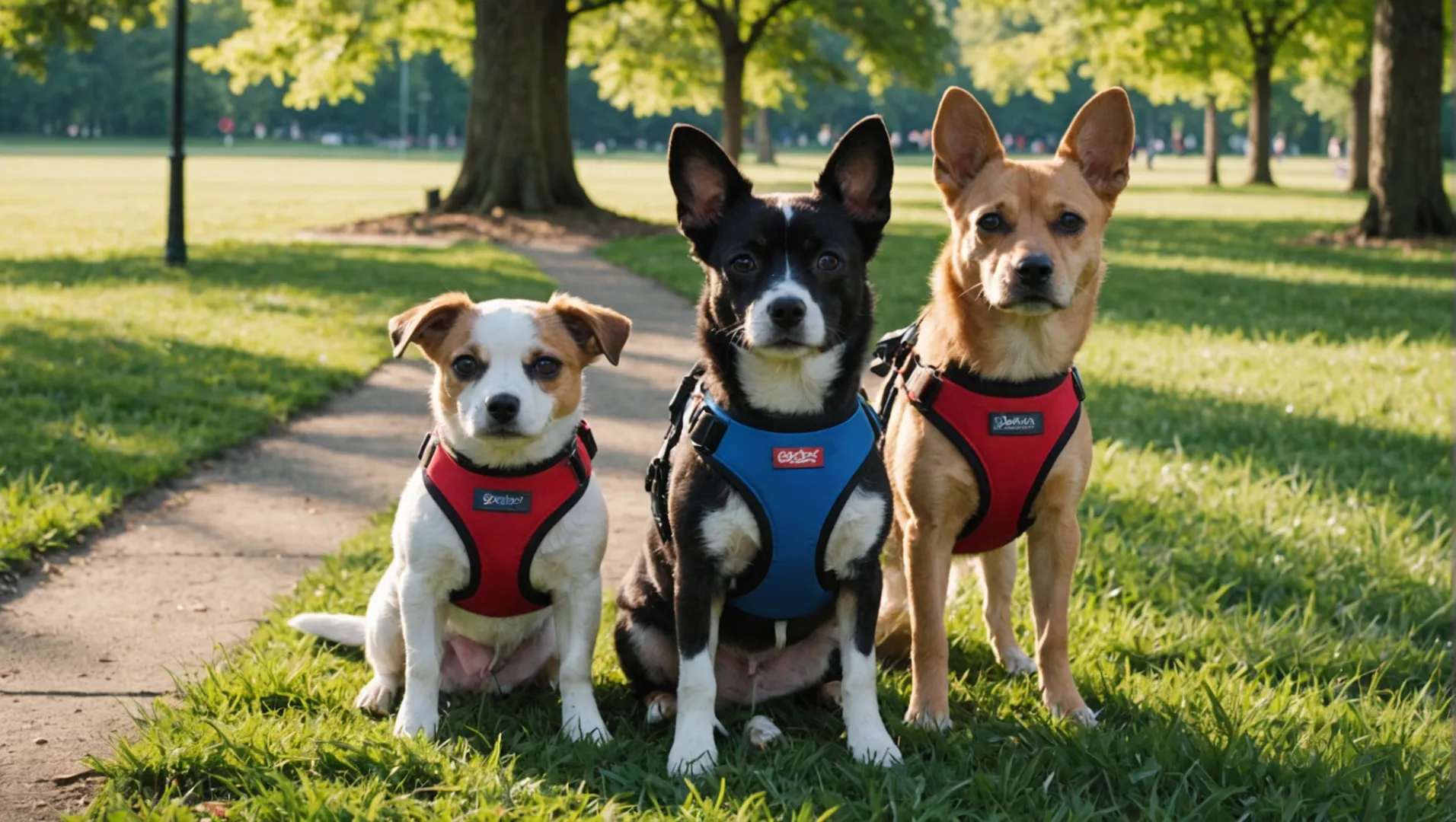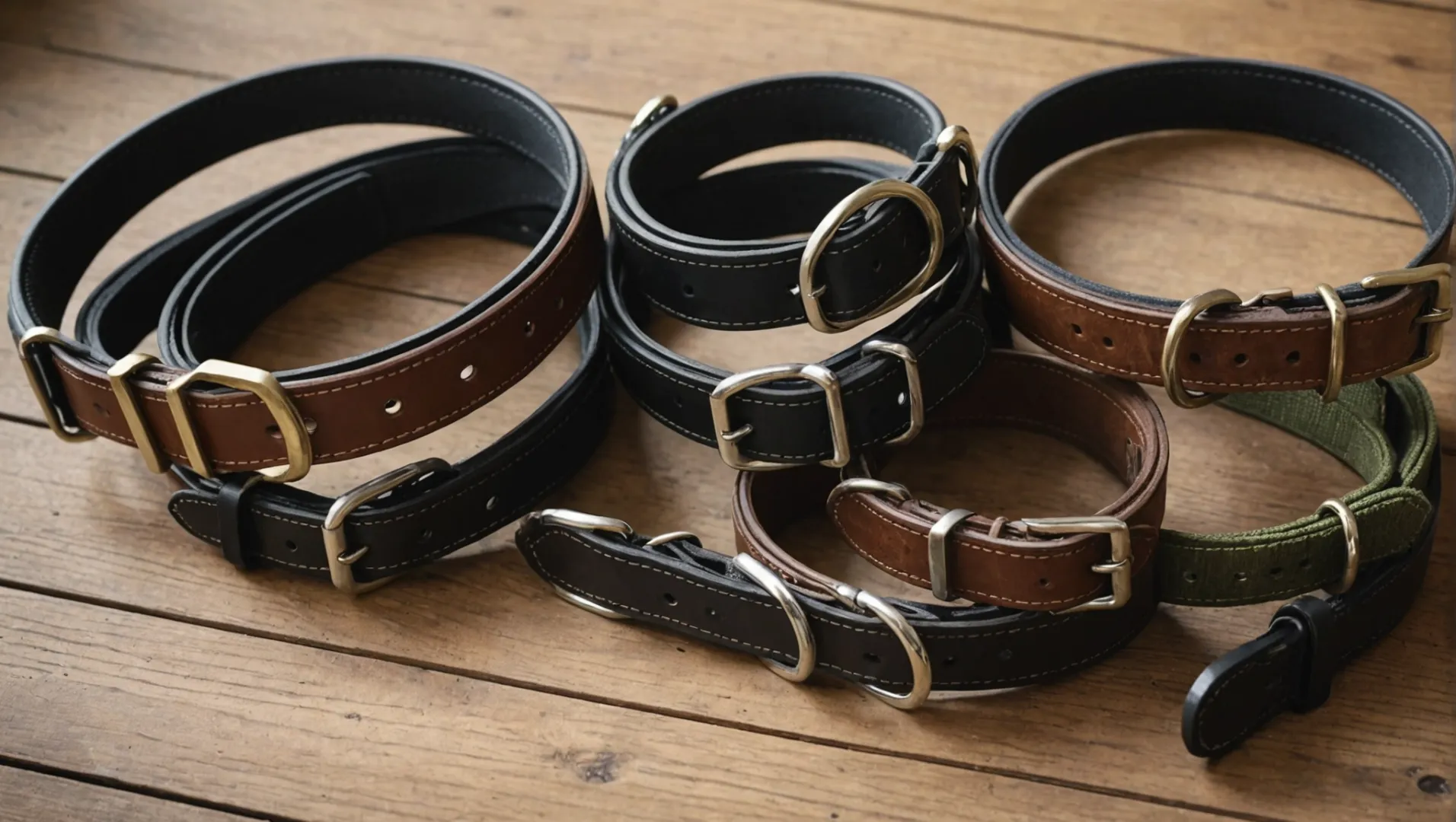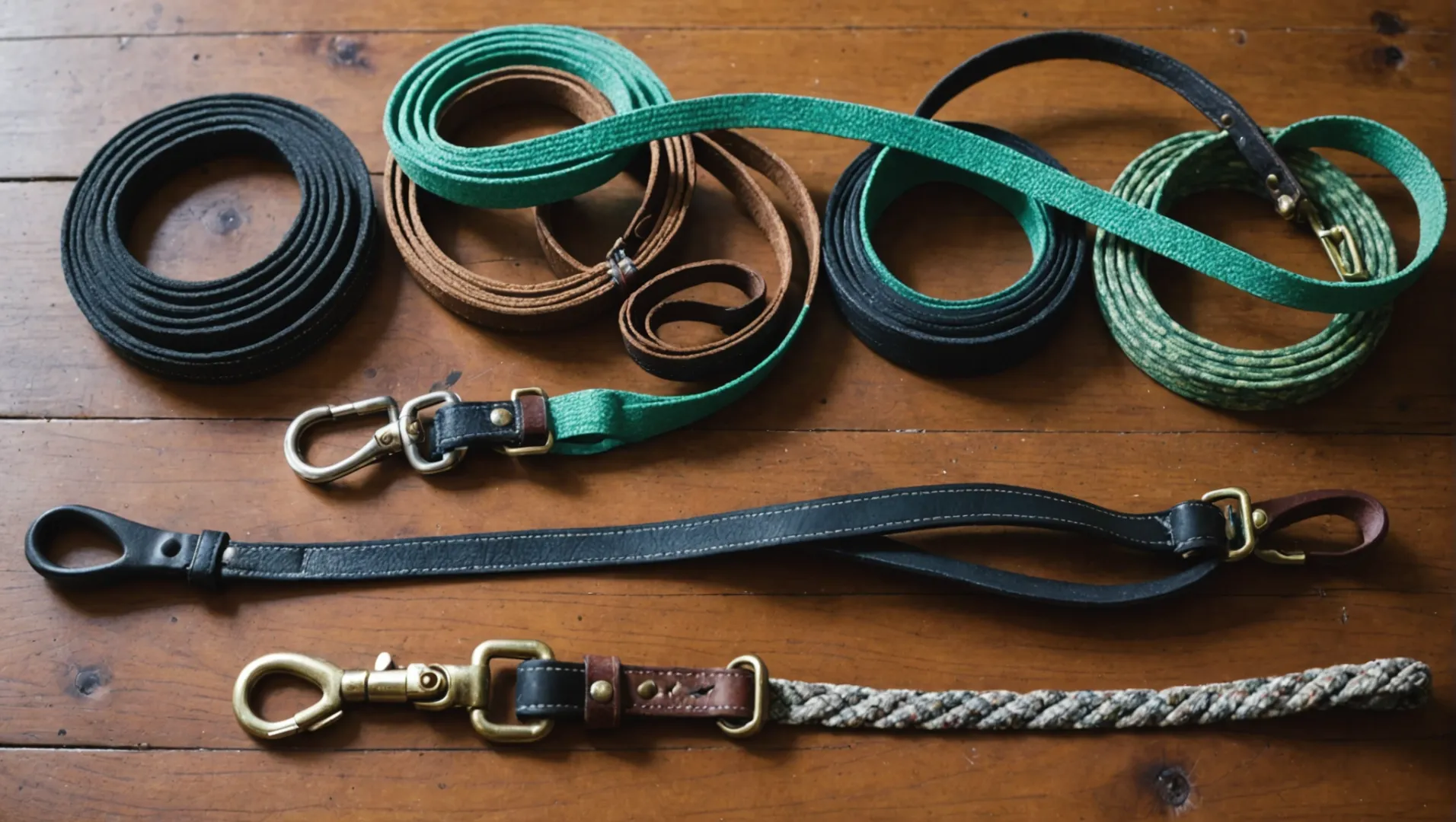Finding the perfect harness for your dog can make a world of difference during walks, especially if your dog is a strong puller.
The best shape harness for dogs often depends on the dog’s behavior and size. Front-clip harnesses are ideal for pullers as they discourage pulling by redirecting the dog’s movement. Back-clip harnesses work well for calm walkers, while dual-clip options provide versatility.
While this quick overview gives you a basic idea of what to look for, understanding the nuances of each harness type can help ensure the best fit for your furry friend. Read on to discover detailed insights into each harness style and key features that enhance both comfort and control.
Front-clip harnesses are best for dogs that pull.True
Front-clip harnesses redirect pulling by turning the dog towards the owner.
How Do Front-Clip Harnesses Prevent Pulling?
Front-clip harnesses are a game-changer for dog owners dealing with pulling. But how exactly do they work?
Front-clip harnesses prevent pulling by redirecting a dog’s forward momentum to the side, thus discouraging the behavior. When a dog pulls, the leash attached to the front of the harness causes them to turn towards the handler, making pulling ineffective.
The Mechanics Behind Front-Clip Harnesses
Front-clip harnesses feature a leash attachment point located on the chest of the dog, rather than the back. This design is critical because it leverages the dog’s own forward momentum against them. When a dog pulls, the force is directed sideways, effectively turning the dog back towards their owner. This redirection discourages pulling because it doesn’t allow the dog to reach their intended destination.
Why Redirection Works
Redirection works because it interrupts the natural pulling cycle. Unlike back-clip harnesses, which can inadvertently encourage pulling by allowing dogs to lean into the harness and pull harder, front-clip designs create an immediate consequence for pulling—turning away from their goal. This immediate feedback helps dogs learn that pulling is ineffective.
Suitable Breeds and Sizes
While front-clip harnesses1 are particularly beneficial for strong pullers like Huskies or energetic breeds such as Labradors, they can also be used for smaller dogs that tend to pull. The key is selecting a harness that offers proper adjustability and comfort for your dog’s size and breed.
| Breed | Recommended Harness Size |
|---|---|
| Labrador | Large |
| Beagle | Medium |
| Dachshund | Small |
| Great Dane | Extra-Large |
Adjustability and Fit
A snug fit is crucial. Look for harnesses with multiple adjustment points to ensure it sits comfortably on your dog’s chest without restricting movement. A well-fitted harness enhances the effectiveness of the front-clip mechanism.
Training Tips
Introduce the harness slowly to ensure your dog is comfortable. Begin training in low-distraction environments, gradually increasing the complexity as your dog learns not to pull. Reinforce positive behavior with treats or praise to strengthen the training process.
Front-clip harnesses offer an excellent solution for managing pulling behavior while maintaining control and safety during walks. By understanding how these harnesses function, you can select the right option for your canine companion.
Front-clip harnesses redirect pulling dogs sideways.True
The harness turns the dog towards the handler, discouraging pulling.
Back-clip harnesses are more effective than front-clip ones.False
Back-clip harnesses can encourage pulling by allowing dogs to lean in.
Are Back-Clip Harnesses Suitable for All Dogs?
Choosing the right harness is crucial for your dog’s safety and comfort. Are back-clip harnesses the universal solution?
Back-clip harnesses are suitable for dogs that do not pull during walks. They are easy to use and comfortable for well-behaved dogs, but not recommended for strong pullers as they offer less control.
Understanding Back-Clip Harnesses
Back-clip harnesses, featuring a leash attachment on the dog’s back, are popular due to their simplicity and comfort. They are generally easy to put on, making them a favored choice among dog owners. However, they might not be the best option for every dog.
Pros of Back-Clip Harnesses
- Comfortable Fit: These harnesses distribute pressure evenly across the dog’s body, reducing strain on the neck. This makes them ideal for small to medium-sized dogs that walk calmly.
- Ease of Use: With a simple design, these harnesses are quick to put on and take off, which is beneficial for dogs that dislike overhead gear2.
Cons of Back-Clip Harnesses
- Limited Control: For dogs that tend to pull, back-clip harnesses may inadvertently encourage pulling, as the dog’s center of gravity remains unchanged. This can lead to uncomfortable walks and potential strain for the handler.
- Not Ideal for Training: If you’re training a young or energetic dog, consider other options like front-clip or dual-clip harnesses that offer better control and redirect pulling behavior.
Assessing Suitability by Dog Size and Behavior
To determine if a back-clip harness is suitable, consider your dog’s size and behavior:
| Dog Size | Suitable | Explanation |
|---|---|---|
| Small Dogs | Yes | Lightweight, easy to manage |
| Medium Dogs | Yes/No | Depends on behavior |
| Large Dogs | No | Less control for pullers |
Evaluating Your Dog’s Needs
Consider your dog’s temperament and walking habits when selecting a harness. If your dog is calm and doesn’t pull, a back-clip harness can be an excellent choice for leisurely strolls in the park. However, for strong pullers3, a different harness style might be necessary.
Key Considerations
When choosing a back-clip harness, look for models with adjustable straps and durable materials to ensure comfort and longevity. Additionally, assess whether the harness provides adequate control based on your dog’s behavior.
Ultimately, understanding your dog’s unique needs will guide you in selecting the most suitable harness type.
Back-clip harnesses are ideal for strong pullers.False
Back-clip harnesses offer less control, making them unsuitable for pullers.
Back-clip harnesses are easy to put on.True
Their simple design allows quick and easy application on dogs.
What Are the Benefits of Dual-Clip Harnesses?
Dual-clip harnesses offer flexibility and control for dog owners, making them a versatile choice for various walking scenarios.
Dual-clip harnesses benefit dog owners by providing both front and back attachment options, catering to different walking needs. The front clip helps manage pulling behaviors, while the back clip offers a comfortable walk for well-behaved dogs.
Versatility in Walking Styles
Dual-clip harnesses are popular due to their adaptable design, making them suitable for diverse walking needs4. With two attachment points, owners can adjust based on the dog’s behavior and the walking environment. Whether it’s a casual stroll or training session, this harness adapts to different situations with ease.
Enhanced Control for Pulling
The front clip is particularly beneficial for managing dogs that have a tendency to pull. By attaching the leash to the front, owners can redirect their dog’s movement, promoting better walking manners. This feature makes it ideal for training sessions or when introducing new walking routes.
Comfort and Security
With a back clip option, dual-clip harnesses also offer comfort for dogs that are already trained or naturally calm walkers. This clip allows for a relaxed walking experience, reducing pressure on the neck and distributing weight evenly across the chest.
Practicality and Ease of Use
Many dual-clip harnesses feature adjustable straps for a customized fit, ensuring your dog’s comfort and safety. Additionally, their design often incorporates quick-release buckles, making them easy to put on and take off, even for anxious or excited dogs.
Considerations When Choosing a Dual-Clip Harness
When selecting a dual-clip harness, consider factors such as size, material, and additional features like padding or reflective strips. These elements can enhance your dog’s comfort and safety during walks, making every outing enjoyable. For more insights, explore how adjustability5 affects harness fit and performance.
Dual-clip harnesses have both front and back attachments.True
Dual-clip harnesses provide flexibility with two attachment points.
Front clips on harnesses are not useful for pulling dogs.False
Front clips help manage pulling by redirecting the dog's movement.
Why Choose a Step-In or Vest Harness?
Wondering if a step-in or vest harness is right for your dog? Explore the benefits and considerations of these popular options.
A step-in harness is perfect for small dogs or those that dislike overhead harnesses, offering ease of use and comfort. A vest harness, often padded, provides additional comfort and control, especially for small to medium-sized dogs.
Ease of Use and Comfort
One of the primary reasons dog owners opt for a step-in harness is its simplicity and comfort. Unlike traditional harnesses that require fitting over the head, a step-in design allows your dog to "step into" the harness, which can be particularly advantageous for dogs that are apprehensive about objects passing over their heads. This design also generally features fewer buckles and fasteners, making it less cumbersome to secure.
For smaller breeds or dogs6 with anxiety issues, a step-in harness can offer a less stressful experience during walks. However, it’s crucial to ensure that the fit is snug to prevent slipping out, which can be a concern with these types of harnesses.
Enhanced Comfort and Control
Vest harnesses typically come padded and made with soft materials, such as mesh or neoprene, making them a comfortable option for your pet. The added comfort does not compromise control; many vest harnesses distribute pressure evenly across the chest, which can help prevent injuries or discomfort during walks.
These harnesses are particularly beneficial for dogs with sensitive skin or for long-haired breeds where chafing might be an issue. Additionally, vest harnesses provide better control than a simple collar, making them ideal for small to medium-sized dogs that might tend to pull slightly.
Key Considerations
- Size and Adjustability: Ensure the harness is adjustable to fit your dog’s unique body shape. Measure around the chest and neck to find the perfect fit.
- Material Quality: Look for breathable materials that won’t overheat your dog, especially in warm climates.
- Security Features: Some models include additional clips or safety straps for extra security, essential for escape-prone pets.
While step-in and vest harnesses offer many advantages, they may not be suitable for all dogs. Larger breeds or strong pullers might benefit from more robust designs such as dual-clip7 harnesses that provide greater control.
Step-in harnesses are ideal for anxious dogs.True
Step-in harnesses avoid overhead fitting, easing anxiety in dogs.
Vest harnesses are unsuitable for small dogs.False
Vest harnesses provide comfort and control, ideal for small dogs.
Conclusion
Selecting the right harness can transform your walks from stressful to enjoyable. Consider your dog’s needs and behavior to make the best choice.
-
Explore top-rated front-clip harnesses suitable for various dog sizes and breeds.: The other harness we have is the 2Hounds Freedom Harness. It has a martingale loop at the back and a front clip. Works great with double ended … ↩
-
Discover why some dogs prefer simple back-clip designs.: Back-clip dog harnesses offer several advantages. Top among these are comfort and visibility. These harness types are comfortable for most dogs … ↩
-
Find solutions better suited for controlling strong pullers.: Our top pick is the Blue-9 Balance Harness, a highly adjustable harness that significantly reduces pulling. ↩
-
Explore how dual-clip harnesses adapt to various walking needs.: Benefits of Using a Dog Harness for Leash Walking — and More! · Protect Sensitive Areas & Vital Structures · Emotional Well-Being · Fewer Houdini … ↩
-
Learn why adjustability is crucial for a perfect fit.: 7 benefits of an adjustable harness for dogs · 1. Harnesses Give You More Control · 2. Prevents Escape · 3. Harnesses Prevent Neck Injuries · 4. ↩
-
Learn why step-in harnesses ease walking for anxious dogs.: They offer better control, making it easier to guide and correct your dog during training sessions. This control is gentle yet effective, … ↩
-
Explore how dual-clip designs enhance control for strong pullers.: Using the double-connection of the harness allows you to have better control when your pup tugs a bit harder. Instead of being dragged across the street after … ↩

